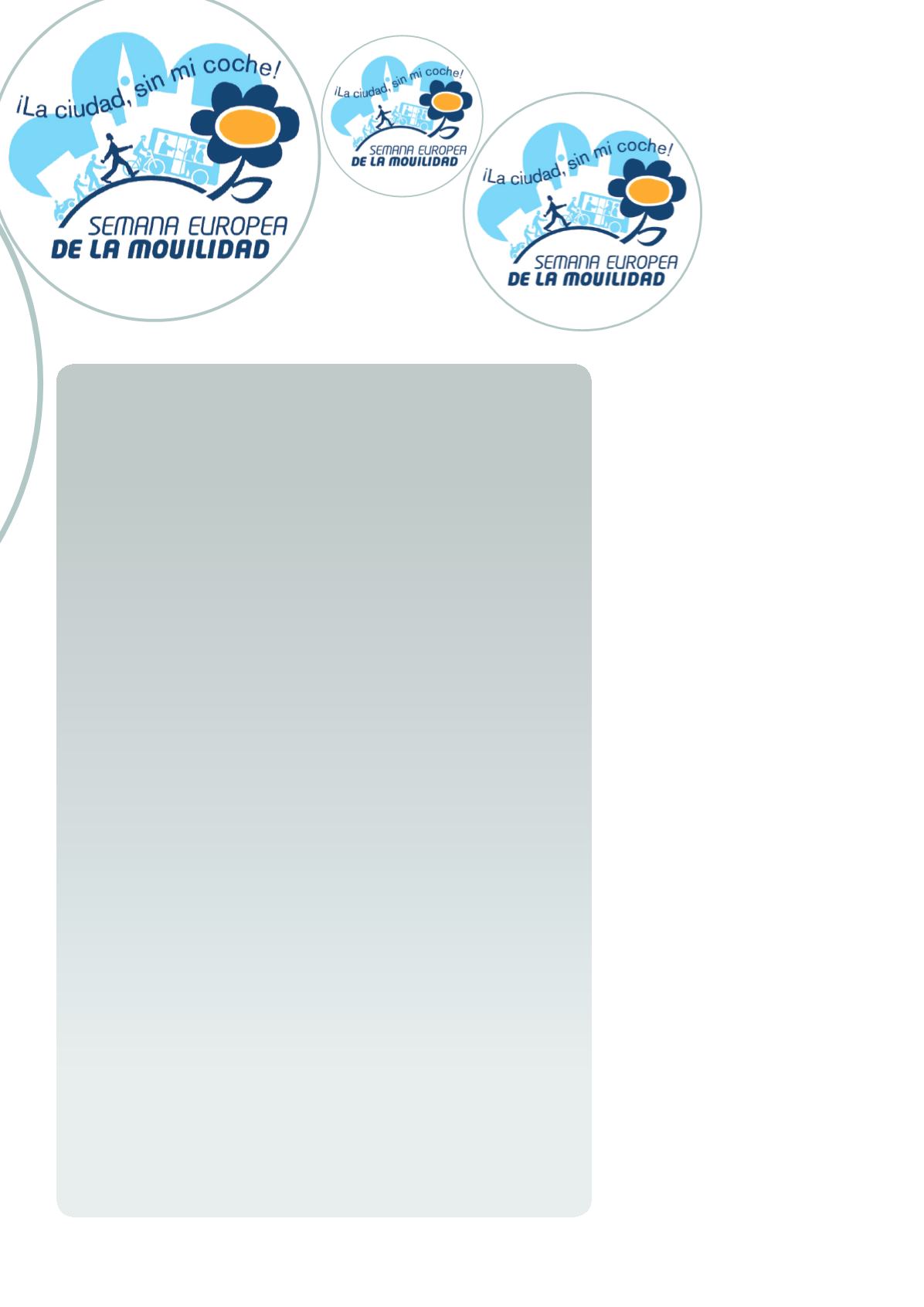
Impacts of greater traffic and traffic congestion
on the quality of urban life
•
Accidents: 40,000 deaths a year in European roads, with the rate of accidents
4x greater in urban areas in comparison with rural zones.
•
Air pollution: Global warming, negative effects on health, higher public health
costs, and erosion of buildings.
•
Biodiversity: traffic pollution, noise, car crashes and the land that is used to build
traffic infrastructures have a negative impact on animal species and on the vege-
tation that could be developed in cities.
•
Decreased economic efficiency: traffic congestion, pollution and accidents result
in significant direct and indirect costs.
•
Energy consumption: the trends show that transport consumes 4% more energy
every year which means that total use of energy doubles every twenty years.
•
Equality: Nearly one-third of households in Europe do not have access to a
vehicle. These people suffer the negative effects of traffic without receiving any
benefits from mobility.
•
Loss of economic activity: city centres, the traditional focus of economic activity
face competition from areas with parking spaces which have less traffic in the
outskirts of the city.
•
Diminished urban space: infrastructures for motor traffic occupy large amounts
of valuable land in city downtown districts and decrease the advantages of open
spaces.
•
Noise and vibrations: Transport is a great source of pollution and it has been
proven to be the cause of health and environmental problems such as damage
to historic buildings.
•
Isolation: Congested urban roads plus the lack of sufficient alternative infrastruc-
tures can result in communities that are socially and economically isolated from
larger urban areas.
•
Visual intrusion: the aesthetic qualities of cities diminish as a result of parked ve-
hicles and related infrastructures. This could have an impact on a city’s potential
as a tourist attraction.
t h e p l a c e
•
The dirt from exhaust pipes accumu-
late on the building façades and win-
dows and this means cleaning costs.
•
Acid rain due to air pollution corrodes
the outdoor walls of buildings and da-
mages statues and monuments.
•
Traffic vibrations harm the structural in-
tegrity of buildings thereby increasing
maintenance costs. It also destroys
historic buildings that were never de-
signed for facing the problems caused
by motor traffic.
It is necessary to emphasise the balance
between the mobility of people and eco-
nomic growth and the need to respect the
environment and to provide an acceptable
quality of life for everyone. With less traffic,


